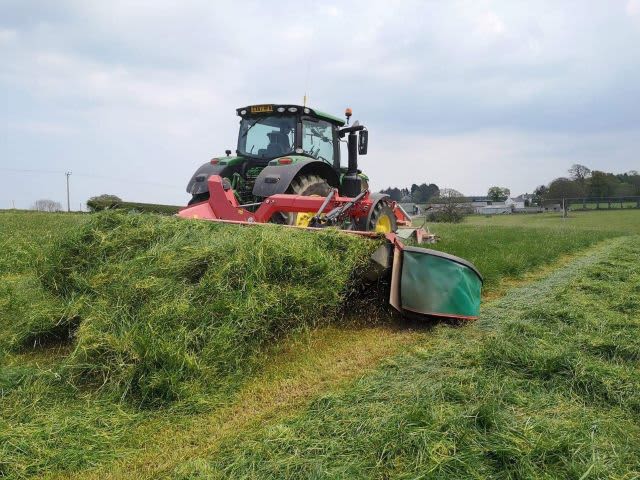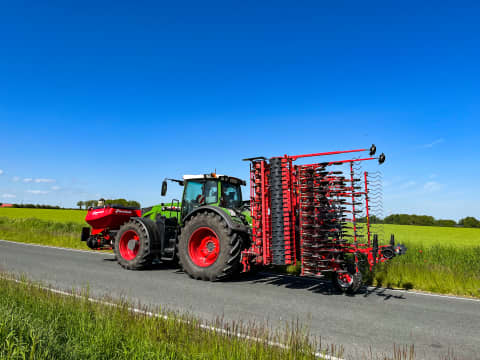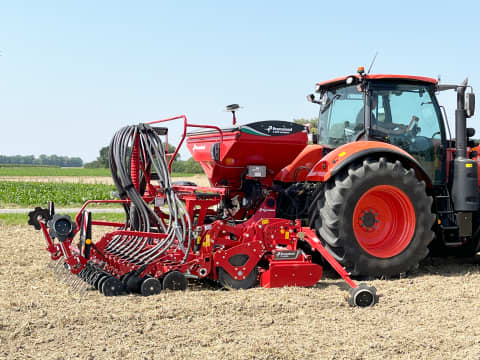For the last 37 years, mowing has been an integral part of contracting for Andrew Kippax.
“We started with a 9ft mower, as the single swath suited the balers – both round and conventional – rather than pulling two smaller lumpy swaths together using a haybob,” he recalls.
Since then, machinery has evolved, productivity has soared, and larger volumes of grass are needed to keep silage teams operating efficiently. It is why the firm now uses a Kverneland 3632FT up front with a 3332MT at the rear.
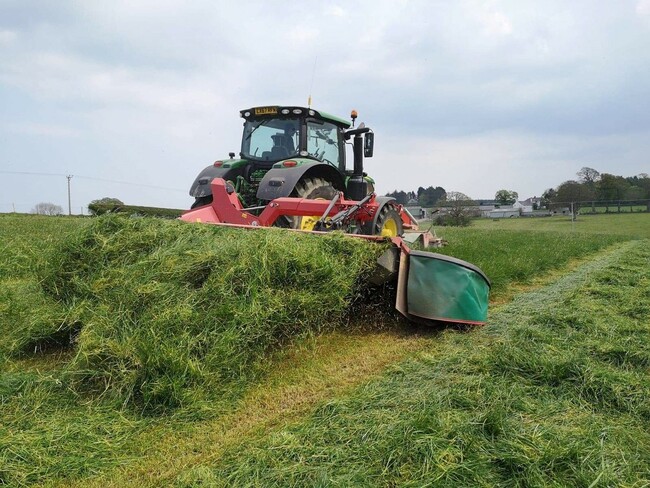
Based at Wigfair Hall, St Asaph, north Wales, AS Kippax Agricultural Contractors scythes it way through 1,500 acres of grass each season, on its way to foraging a total of 3,500 acres of grass using a pair of self-propelled foragers.
“We have a lot of customers who still like to get involved with silaging, and for many, that means mowing,” he says. “But as tractor and forager power has gone up, we’ve shifted to a 6m mower conditioner combination – it’s a flexible and efficient system that lets us drop a large acreage very quickly, to take advantage of the weather.”
“Our Kverneland mowers offer my business much more flexibility than either a 3m trailed or a 9m butterfly,” says Andrew. “And it suits our available tractor power, and if we needed to, we could send both units out separately to keep dropping grass.”
Mr Kippax likes the rear mower’s vertical folding transport position, creating a compact outfit without excessive rear overhang. He also has high praise for the QuattroLink mower bed suspension.
“The race-car suspension really ticked a big box for us,” he says. “We have lots of undulating ground, plus steep rolling fields, and the ability for both mowers to follow ground contours was a big plus.”
“And I have to say, it’s a system that works very well, and the cutting quality is fantastic,” he adds.
Supplied by Mona Tractors, the outfit is used on one of two JD 6195R tractors, making the most of auto-steering to maximise output and minimise overlaps.
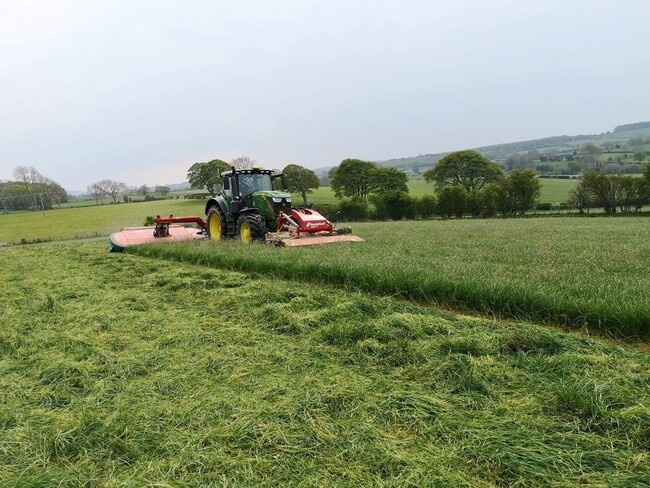
“Field sizes are an average of 7-8 acres,” he says. “And very few are close to square. So it’s important that we always try to mow from the longest boundary, set an A-B line and keep all short-work to a minimum. It’s the best way to mow efficiently.”
He says that output is around 120 acres/day, with forward speeds of around 15kph.
“We ted 99% of what we mow to shorten wilting times, and the semi-swinging steel tine conditioner gets the process off to a great start,” he says. “Then a four-rotor rake pulls 15m into one swath, which keeps our two foragers comfortably fed.”
1st May 2020

